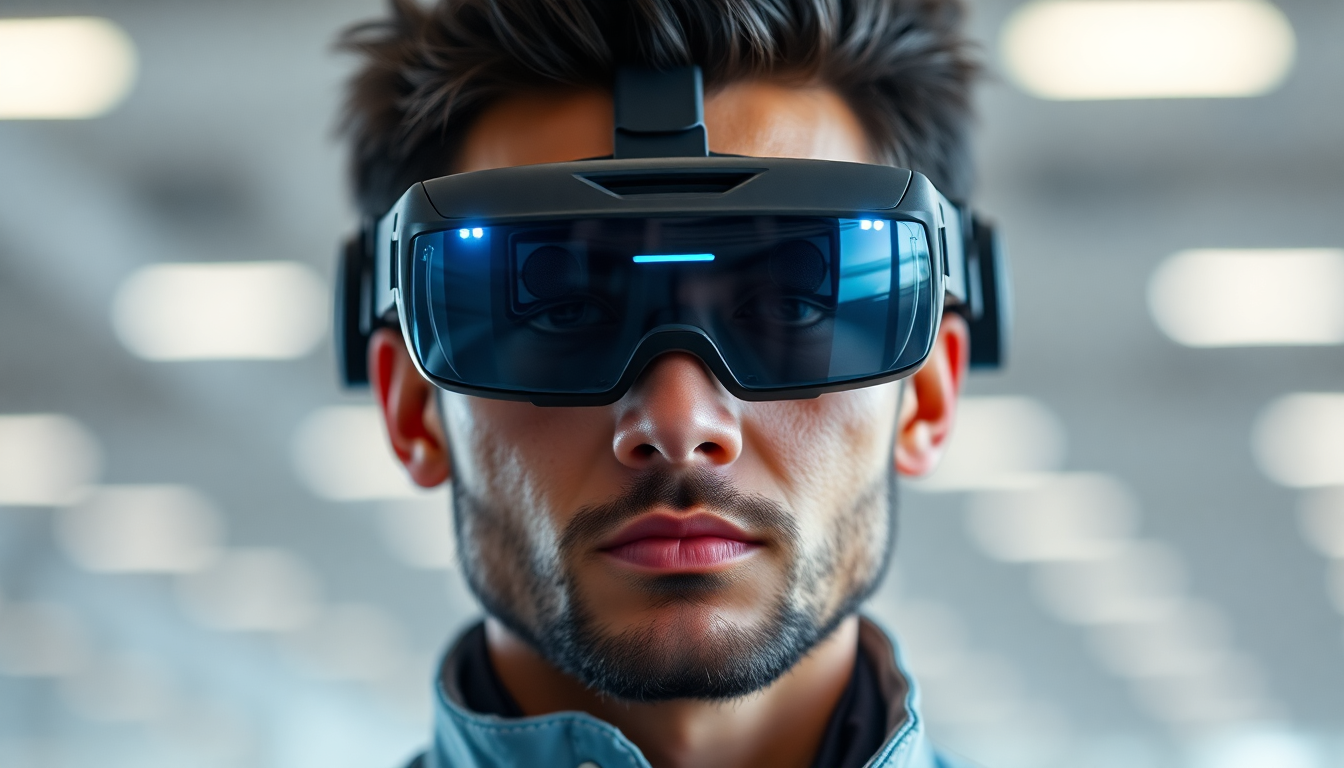What happens when cutting-edge artificial intelligence meets the immersive power of virtual and augmented reality? A revolution in how we work, play, and connect that will blur the lines between the digital and physical worlds.
The fusion of artificial intelligence and virtual/augmented reality is poised to transform how we experience and interact with technology. AI is enhancing the functionality and personalization of VR/AR, while advancements in immersive hardware are bridging the gap between the physical and digital worlds. Together, they are setting the stage for more engaging, intuitive, and life-like applications across industries.
Enhancing Realism and Interactivity
AI is revolutionizing VR/AR by making virtual environments more dynamic and realistic. Through advanced machine learning, AI processes user behavior and adapts digital spaces in real time. This creates more responsive interactions, making virtual worlds feel tangible and alive.
In VR gaming, for example, AI powers non-player characters to react uniquely to individual players, crafting tailored narratives and challenges. In augmented reality, AI recognizes physical surroundings and overlays virtual elements that seamlessly integrate into the user’s environment. These capabilities are creating immersive experiences that feel natural and intuitive.
Personalization at the Core
AI’s ability to learn and adapt is unlocking new levels of personalization in VR/AR. By analyzing user preferences and behaviors, AI can customize experiences to align with individual needs. This increases engagement and relevance, whether it’s in entertainment, education, or retail.
In education, VR powered by AI can adjust lesson plans in real time to suit a learner’s pace, offering extra help where needed or advanced challenges for faster learners. In retail, AR applications allow users to virtually try on products while AI curates personalized recommendations, simplifying decision-making and improving customer satisfaction.
Breakthroughs in Hardware
The success of VR/AR is tied closely to the evolution of hardware. Devices like Meta’s prototype AR glasses, equipped with holographic displays and neural interfaces, signal the next phase of immersive technology. These tools aim to make virtual interactions more seamless, bringing digital content into everyday life.
Meanwhile, advancements in VR headsets, such as improved resolution, haptic feedback, and generative AI integrations, are enhancing the realism and accessibility of VR experiences. These devices, expected to hit the market in the coming years, are designed to cater to a broader audience while providing deeper levels of immersion.
Cost Efficiency and Scalability
AI is not just improving the user experience—it’s making VR/AR more scalable and cost-efficient for businesses. Automation and predictive analytics streamline development, reduce errors, and lower costs. For organizations adopting VR/AR, this means faster implementation and a higher return on investment.
In enterprise settings, AI-driven VR tools are being used for training and collaboration. Workers can practice complex tasks in a virtual environment, reducing risks and improving outcomes. AI’s ability to scale these applications ensures that organizations can expand their use of VR/AR without major resource constraints.
Challenges to Overcome
As promising as this convergence is, it brings challenges. Data privacy remains a key concern, as AI relies on collecting and processing vast amounts of user data. Ensuring this data is handled responsibly is critical.
Ethical questions surrounding AI-driven personalization and manipulation also need to be addressed. Standards for transparency and fairness will be essential as VR/AR applications become more integrated into daily life.
Interoperability is another hurdle. Ensuring that VR/AR platforms and devices can work seamlessly across different ecosystems will require collaboration among developers and manufacturers.
Transforming Everyday Interactions
The blending of AI with VR/AR is already having a profound impact on industries like healthcare, entertainment, and real estate. From virtual surgical training to immersive storytelling and interactive property tours, these technologies are changing how we live and work.
As AI continues to improve, the potential applications of VR/AR will expand. Businesses and consumers alike can expect increasingly sophisticated tools that make virtual interactions more intuitive and meaningful.
The Future of Immersive Technology
The convergence of AI and VR/AR is shaping the future of technology, offering limitless possibilities for immersive, personalized, and interactive experiences. With continued innovation in both software and hardware, these technologies will redefine industries and everyday life.
For organizations ready to embrace this transformation, investing in AI-driven VR/AR today means staying ahead of the curve as these tools become integral to the way we work, learn, and connect. The journey toward a fully immersive digital future has only just begun, and the opportunities are vast.



